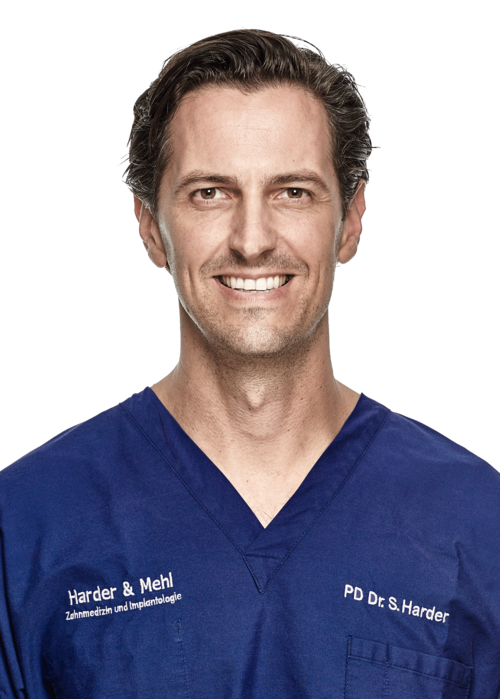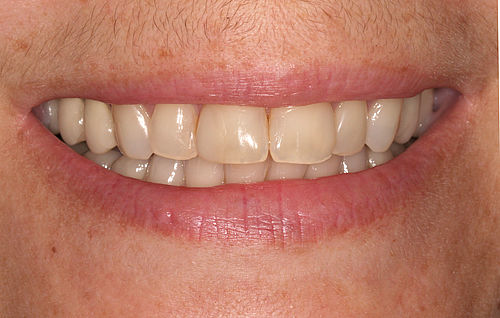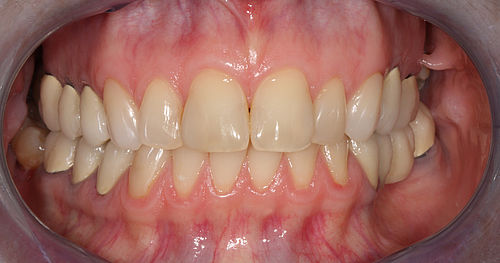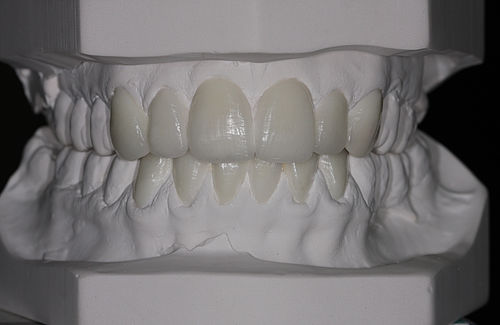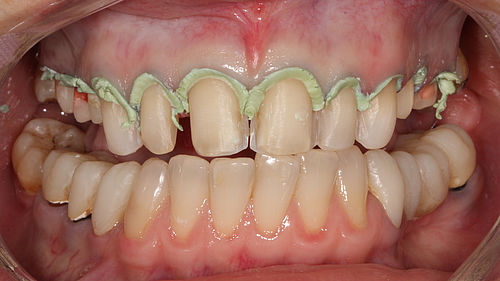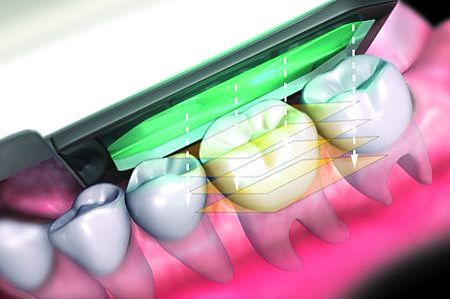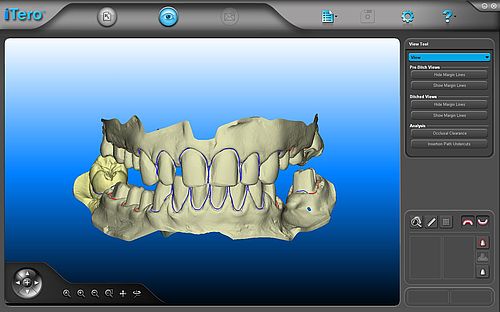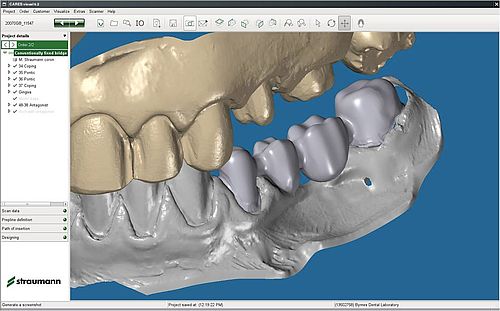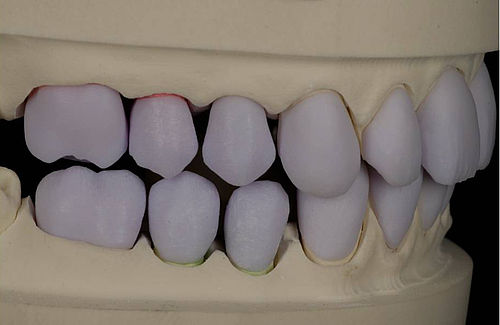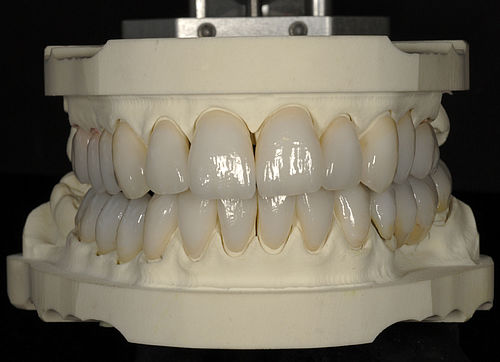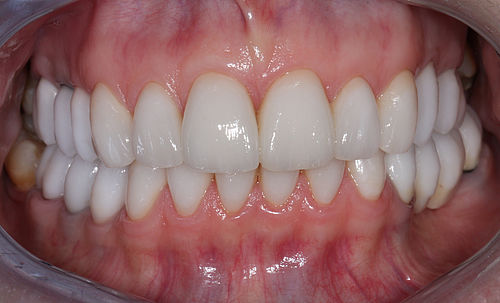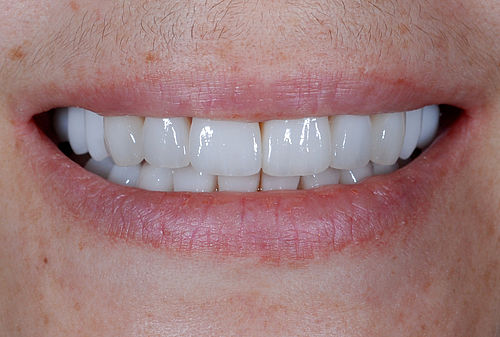Dental Prostheses
Missing teeth aren’t only beauty flaws, they also pose a challenge in everyday life. Modern treatment methods and materials provide a solution. High quality prosthetics forms the basis of the work in our dental practice. And for good reason, as only the perfect interplay between the implantology and prosthetics departments can provide such aesthetically perfect treatment results.
Our practice is one of the few practices in Germany to have both a recognised focus on implantology and implant prosthetics (DGI), but also a specialisation of the German Society for Prosthetic Dentistry and Biomaterials (DGPro). Above all, we place emphasis on long-lasting, restorative materials which have been tested successfully in clinical studies.
Convincing Quality and Aesthetics
Our aim is to offer the best advice and treatment to every patient. This is why we take time to give you comprehensive and honest information on all aspects of the implant treatment. We only work with state-of-the-art diagnostic and therapeutic methods at the highest scientific level. In addition, our own professional dental laboratory offers first-class dental prostheses with perfect quality and aesthetics – made on-site. With us, you get a lifetime guarantee for you dental implants and a 6-year guarantee for your dental prostheses!
Our dental laboratory
Treatment procedure with respect to dental prosthesis
Full restoration with veneers, partial crowns and crowns
More Questions?
We provide you with detailed answers on common questions about dental prostheses – and will gladly answer them in a personal consultation!
FAQ Dental Prostheses
If the crown has been “tried on” and it fits, it is fixed to the tooth using a special mounting cement. The procedures for crowns and fixed dental prostheses are the same.
Normally two appointments are enough to fit the tooth with a crown. At the first appointment, the tooth is prepared and an impression is taken. Based on the impression, the dental technician makes the crown in the desired material. In the meantime, the tooth is protected by a plastic temporary crown. During the second appointment, the actual crown is fitted and affixed to the tooth by a strong layer of cement.
The choice of inlay or partial crown to seal a hole in the tooth depends on how big the damage to the tooth is. Inlays are generally used for small defects, and partial crowns for larger defects.
In the unlikely event that the inlay does fall out, come to our practice straight away. The hole in the tooth must be resealed as quickly as possible, so that bacteria and germs cannot penetrate and lead to caries or an inflammation.
Ceramic inlays and onlays offer perfect aesthetics and high durability. The material is characterised by its colour fastness and high biological compatibility. Changes in temperature are not transmitted through to the interior of the tooth and therefore don’t affect taste. Gold inlays and onlays are only necessary for patients who grind or press their teeth strongly.
Up to three teeth at the side of the mouth or four teeth at the front can be replaced by a bridge. It is preferable to treat larger tooth gaps with implant-mounted dental prostheses.
Bridges have very good durability with an average (50%) lifetime of 20 years. But this depends very much on oral hygiene. Bridges must be well looked after, just like your own teeth. A crown or bridge can be irreparably damaged as a result of tooth decay at the edge of the restoration. Brushing daily with a fluoride containing toothpaste and using dental floss and / or interdental brushes once a day extends the life of their prostheses. Regular visits to the dentist for professional cleaning and check-ups also contribute significantly to a longer lifespan.
An adhesive bridge, also called a glued bridge or Maryland bridge, is a fixed bridge consisting of a metal or ceramic scaffold which is bonded to the neighbouring teeth. Single tooth gaps are usually fitted with adhesive bridges if implants cannot or should not be used. Younger patients who cannot be fitted with implants due to the still-growing jaw especially benefit from this option.
Yes, adhesive bridges can find application in the posterior region. However, only a single missing tooth can be replaced here. Having said this, the adhesive bridge is not suitable for free-end gaps, as in the back of the mouth they must be bonded to two supporting teeth. In the case of a free-end gap, an implant is the best option.
If one of the wings becomes loose, you should come to our practice straight away. If the bridge is undamaged, in most cases we can re-bond it easily. However, re-affixed adhesive bridges have a slightly shorter lifespan than new adhesive bridges.
Implant prosthetics refers to tooth replacements which are mounted on implants. This has many advantages:
- Neighbouring teeth are protected, since they do not need to be ground down to be used as supporting teeth.
- The artificial tooth root ensures that the jaw bone will not recede any further.
- The implantsupported tooth replacement is barely distinguishable from a real tooth.
Generally, yes! Single tooth gaps are fitted with an implant, to which a crown is fixed. Larger gaps can be closed again thanks to implant-supported bridges or partial prostheses. Even in cases of total tooth loss, we can fix the third teeth safely and firmly in the mouth. Ill-fitting, abrasive dentures are now a thing of the past!
A mock-up is an imitation of your finished denture and it shows you what the result at the end of your treatment might look like. For this we produce an impression of your teeth that is then sent to our dental technician. Our dental technician will then use wax to imitate the natural shape and function of your teeth (this is called wax-up). He or she then produces a tray with provisional plastic material to be temporarily fixed in your mouth. This is when you see the end result of your treatment.
A synoptic treatment concept is a modern prosthetic treatment concept. The aim of this treatment comprises all preparations, prosthetic treatment and regular aftercare. The idea of us being your one-stop-shop for all of the above helps us to optimise your dental health care. It also helps prevent complications.
Wax-up refers to the imitation of the correct form and function of the teeth and/or the gums in a model of your teeth. For this we produce an impression of your teeth. This impression is then passed on to our dental technician. Our dental technician will then produce a wax model of the natural shape and function of your teeth based on this wax-up.
Your specialists for dental prostheses
Dental prostheses give you your smile back – for a lifetime
Prof. Dr. med. dent. Christian Mehl
“Tooth loss can greatly affect quality of life. But with modern dental prostheses, we can deal with any kind of tooth loss reliably and with great aesthetic results.”
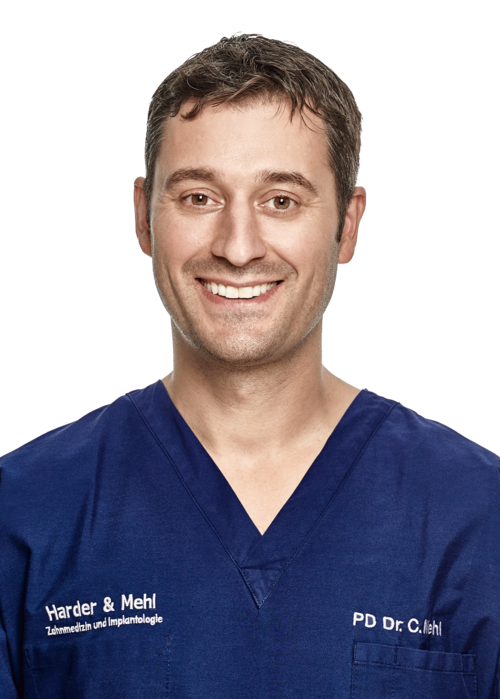
The best care for every patient!
PD Dr med. dent. Sönke Harder
“We are constantly striving to offer every patient the best-possible care. Therefore, we offer you a wide range of dental services, for the solution that is tailored to your needs.”
